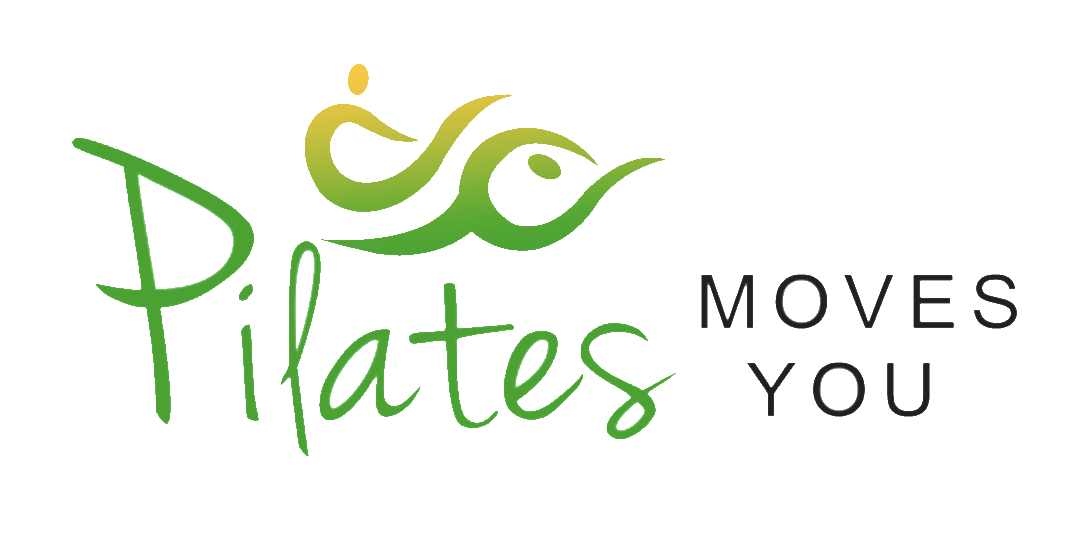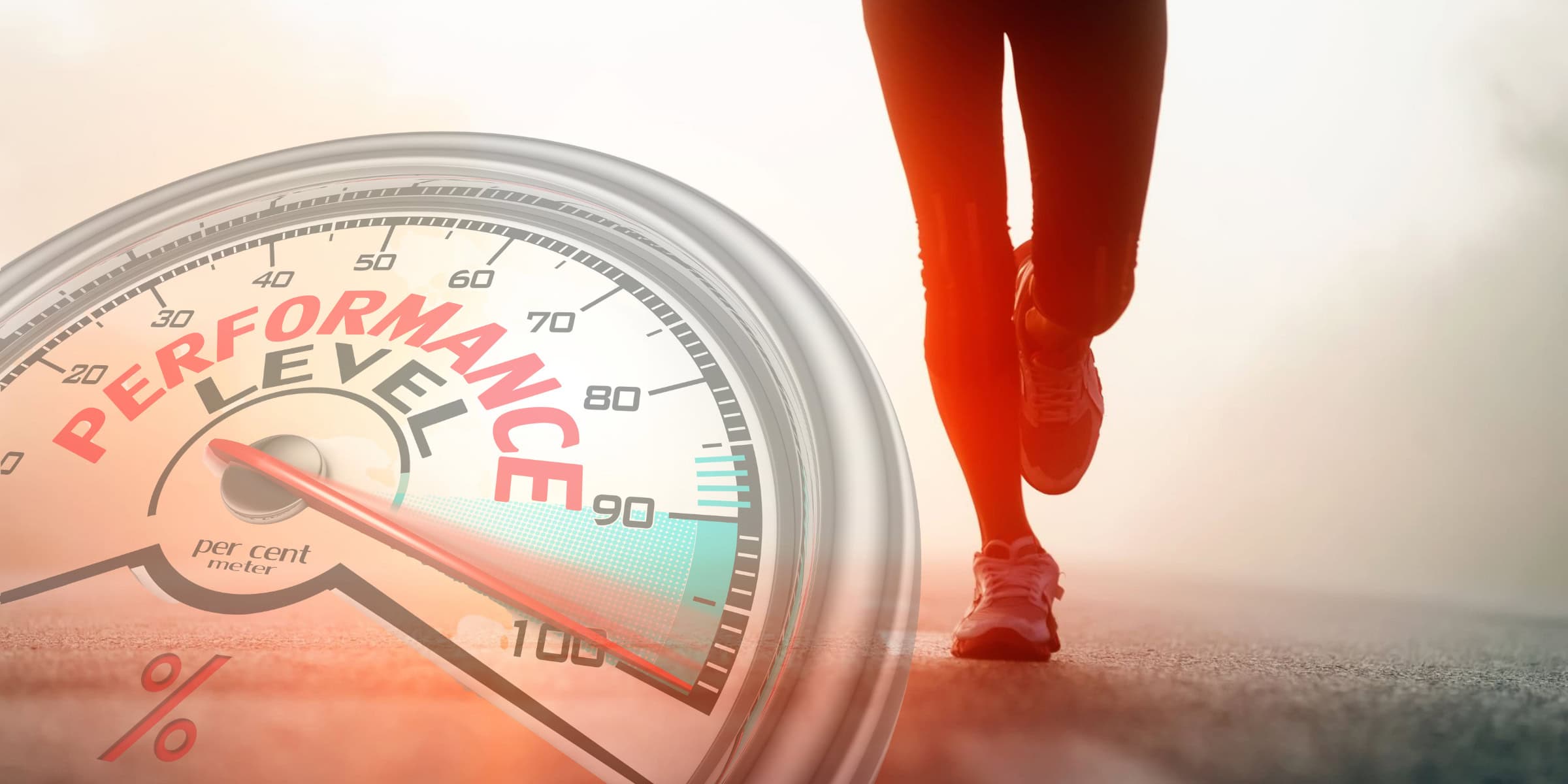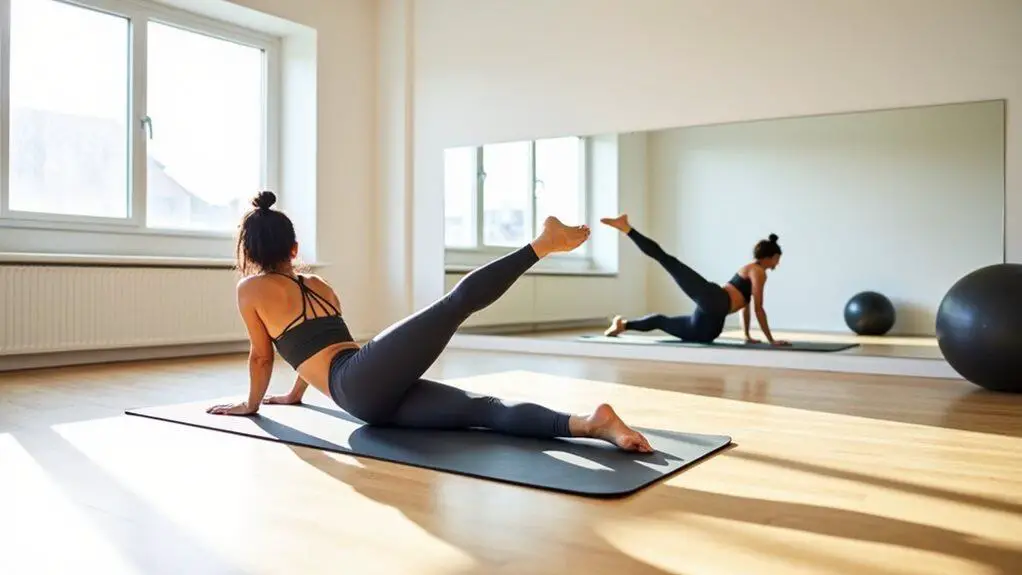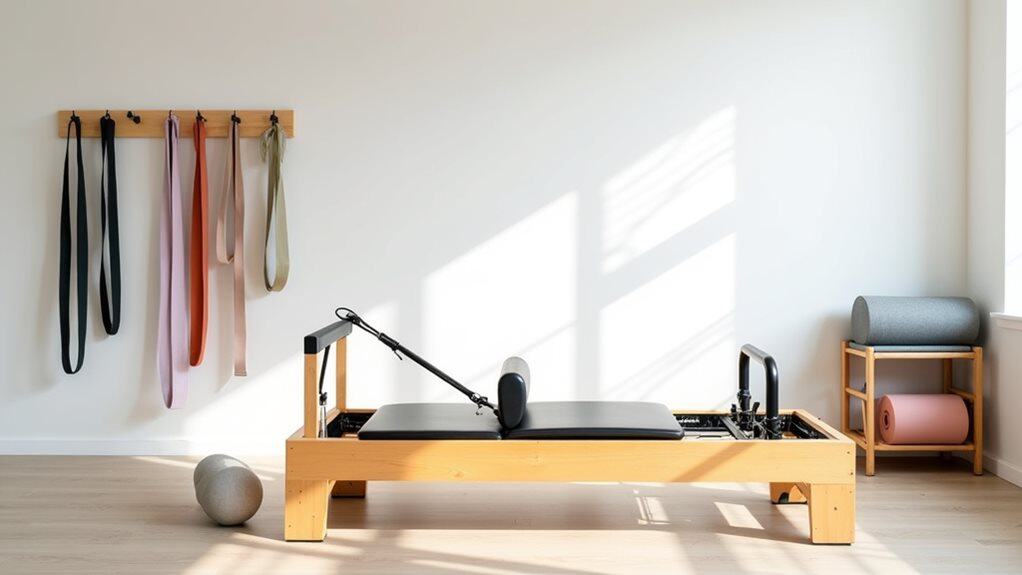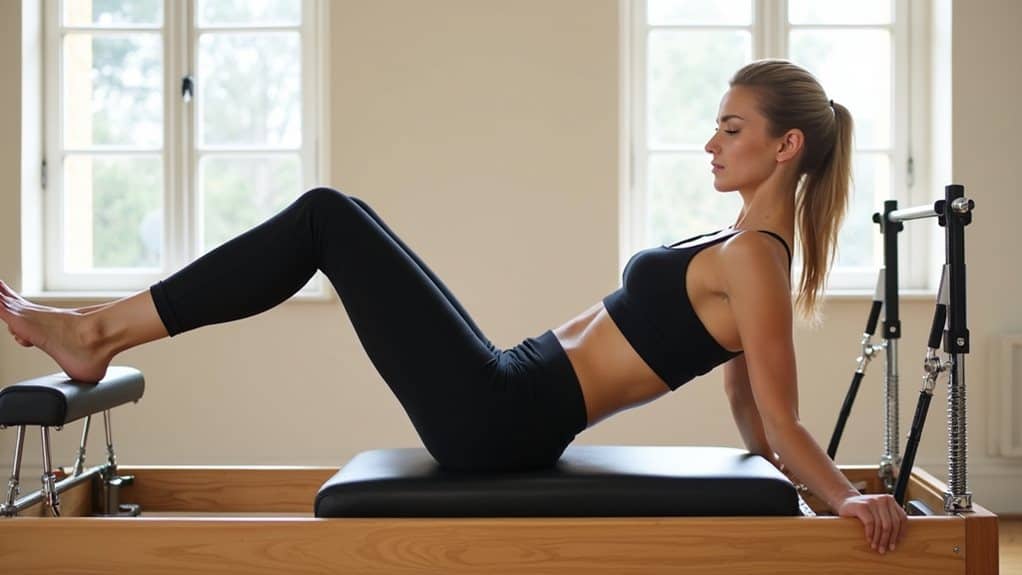Have you ever wondered if Pilates can help improve your athleticism? Is it an effective way to increase strength, flexibility and balance as well as enhance performance in other sports? Could it be a beneficial supplement to other forms of exercise?
Pilates can make you more athletic as it focuses on improving core strength, flexibility, balance, and overall body awareness, which are all important factors in athletic performance. Regular Pilates practice can enhance your athletic abilities by improving your posture, stability, coordination, and overall movement efficiency.
Many athletes, from dancers to professional athletes, have incorporated Pilates into their training routine to improve their performance and reduce the risk of injuries.
What is Pilates and its Benefits?
Pilates exercises are typically performed on a mat or with specialized equipment, such as the reformer or the Cadillac. The exercises involve precise movements and controlled breathing, which helps to engage the deep core muscles like the abdominals, back muscles, and pelvic floor muscles.
Pilates can benefit athletes in several ways. Firstly, it helps in developing a strong and stable core, which is essential for improving overall body strength and power. A strong core allows athletes to generate more force in their movements, resulting in better performance in sports. Secondly, Pilates can improve flexibility, which is crucial for athletes to achieve a full range of motion in their joints. Increased flexibility not only enhances athletic performance but also helps prevent injuries.
Can Pilates improve athletic performance?
Pilates can improve athletic performance and can be particularly beneficial for athletes who rely on core strength, flexibility, and precise movements, such as dancers, gymnasts, and martial artists.
Pilates helps to develop a strong and stable core, which provides a solid foundation for all other movements. It also promotes body awareness and proper alignment, which allows athletes to move more efficiently and with less stress on the body.
Pilates focuses on strengthening the smaller, stabilizing muscles that often get neglected in traditional strength training. These muscles play a vital role in maintaining balance and stability, which is crucial for athletes to perform at their best and reduce the risk of injuries.
It is important to note that while Pilates can be a valuable addition to an athlete’s training routine, it should not be the sole form of exercise. It is essential to combine Pilates with other types of training, such as cardiovascular exercises and sport-specific drills, to achieve optimal results.
Pilates and Core Strength
By practicing Pilates regularly, individuals can improve their overall core strength and stability, which can have a positive impact on athletic performance.
How Pilates strengthens the core?
Pilates exercises typically involve controlled, precise movements that target the deep muscles of the core. These exercises engage the muscles in a way that builds strength, flexibility, and endurance.
By consistently practicing Pilates, individuals can develop a solid foundation of core strength that supports and enhances their athletic abilities.
Importance of core strength in athletic performance
Having a strong core is essential for athletes of all disciplines. A strong core provides stability and balance, which are crucial for executing powerful movements and maintaining proper form. It also improves overall body control and coordination, allowing athletes to move efficiently and effectively.
Whether you’re a runner, a basketball player, or a weightlifter, a strong core can improve your performance and reduce the risk of injury. With a solid core foundation, athletes can generate more power, increase agility, and maintain better posture throughout their workouts or games.
So, does Pilates make you more athletic? The answer is yes. By strengthening the core and improving overall body control, Pilates can enhance athletic performance in various sports and activities. Incorporating Pilates into your training routine can help you unlock your full potential as an athlete.
For more information on Pilates and its benefits, you can visit https://en.wikipedia.org/wiki/Pilates.
Pilates and Flexibility
Pilates is a popular exercise method that focuses on improving flexibility, strength, and body awareness. Many athletes and fitness enthusiasts incorporate Pilates into their training routine to enhance their athletic performance. But does Pilates actually make you more athletic? Let’s explore the connection between Pilates and flexibility.
Enhancing flexibility through Pilates
One of the key benefits of Pilates is its ability to improve flexibility. The exercises in Pilates target the muscles and joints, increasing their range of motion and flexibility. The controlled movements and stretching in Pilates help to lengthen and strengthen the muscles, making them more flexible.
By regularly practicing Pilates, athletes can improve their overall flexibility, which can benefit their athletic performance. Increased flexibility allows for a greater range of motion in the joints, improving joint mobility and preventing injuries. Athletes who have better flexibility can move more freely and efficiently, enhancing their performance in various sports and physical activities.
How flexibility aids athletic performance
Flexibility plays a crucial role in athletic performance. It allows athletes to perform movements with greater efficiency, power, and control. Here are a few ways in which flexibility can aid athletic performance:
- Increased range of motion: A greater range of motion in the joints allows athletes to perform movements with more significant amplitude. This can lead to improved technique, speed, and power in sports such as gymnastics, martial arts, and dancing.
- Injury prevention: Flexibility helps to maintain proper alignment and balance in the body, reducing the risk of injuries. It allows for better body mechanics and absorbs forces during movements, preventing strains and sprains.
- Muscle balance and coordination: Improved flexibility can help balance muscle strength and length, promoting better coordination and control. This is important for precise movements and complex sports techniques.
- Recovery and muscle soreness: Stretching exercises in Pilates can aid in muscle recovery and alleviate muscle soreness after intense workouts or training sessions. It helps to promote blood circulation and relieve muscle tension.
Overall, Pilates can be a valuable tool for enhancing flexibility and improving athletic performance. It is essential to incorporate a well-rounded training program that includes strength training, cardiovascular exercises, and flexibility training like Pilates. By combining these elements, athletes can optimize their performance and reach their full athletic potential.
Pilates and Posture
Pilates is a popular exercise method that focuses on strengthening the core muscles, improving flexibility, and enhancing overall body alignment. While it may not directly make you more athletic in terms of speed or strength, Pilates can significantly contribute to your athletic performance by improving your posture.
Improving posture with Pilates
One of the key benefits of Pilates is its emphasis on proper body alignment and posture. The exercises in Pilates target the deep stabilizing muscles of the core, including the muscles of the abdomen, back, and pelvis. By strengthening these muscles, Pilates helps to correct imbalances in the body and promotes a more aligned and efficient posture.
Good posture allows for optimal movement patterns and reduces the risk of injuries. It helps to distribute forces evenly throughout the body, minimizing stress on certain joints and muscles. Improved posture also enhances breathing efficiency, which is crucial for endurance and stamina during athletic activities.
The impact of good posture on athletic performance
Having good posture can positively impact your athletic performance in several ways. Firstly, it enhances body control and coordination, allowing you to move more efficiently and effectively. This can lead to improved balance, agility, and spatial awareness, all of which are essential for many sports.
Additionally, good posture can help optimize muscle recruitment during exercise. When your body is properly aligned, the muscles can work together more effectively, generating more power and reducing the risk of overuse injuries. It also allows for a better transfer of force, enabling you to generate more speed and power in activities such as running, jumping, or throwing.
Moreover, proper posture supports joint stability, reducing the risk of strains, sprains, and other injuries. It can also alleviate muscle tension and imbalances, leading to improved flexibility and range of motion.
For more information on Pilates and its benefits, see this article on the benefits of Pilates.
Pilates and Balance
When it comes to athletic performance, balance plays a crucial role in overall success. Pilates, a low-impact exercise method that focuses on core strength, flexibility, and body alignment, can be an excellent way to improve balance and enhance athletic abilities.
Developing balance through Pilates exercises
One of the main objectives of Pilates is to develop core stability, which is essential for maintaining balance. By engaging the deep abdominal muscles and muscles around the spine, Pilates helps to improve body awareness and control, allowing individuals to move more efficiently and maintain proper alignment.
Through a series of controlled and precise movements, Pilates exercises challenge the body’s stability and promote balance. Various exercises, such as the single-leg balance and the hundred, require individuals to engage their core muscles while maintaining equilibrium, thus improving balance and control.
Additionally, Pilates equipment such as the Reformer and the Wunda Chair can enhance balance training. These machines provide resistance and support, allowing individuals to perform exercises that require balance while providing assistance when needed.
The role of balance in athletic performance
Balance is fundamental in almost every sport or physical activity. It helps athletes move with greater control and precision, allowing them to perform complex movements and techniques more effectively. Whether it’s maintaining balance while running, pivoting during a tennis match, or executing a perfect landing in gymnastics, balance plays a crucial role in optimal athletic performance.
By incorporating Pilates into their training routine, athletes can improve their balance, stability, and overall body control. This can lead to enhanced agility, coordination, and reduced risk of injuries.
In conclusion, Pilates can indeed make you more athletic by improving balance and body control. By practicing Pilates exercises regularly and focusing on core stability, athletes can enhance their performance, reduce the risk of imbalances or injuries, and achieve their maximum potential in their chosen sport or physical activity.
Remember to consult with a qualified Pilates instructor or fitness professional to design a program that suits your individual needs and goals.
Pilates and Injury Prevention
As an athlete, one of your top priorities is to stay injury-free and perform at your best. Pilates can play a significant role in injury prevention and enhance your athleticism.
How Pilates can help prevent injuries
1. Core Strength: Pilates exercises focus on strengthening the core muscles, including the abdominals, back, and hips. A strong and stable core improves your overall posture, balance, and stability, reducing the risk of injuries, especially in high-impact sports.
2. Flexibility: Pilates stretches and lengthens muscles, improving flexibility and joint mobility. Increased flexibility can help prevent muscle imbalances, reduce muscle strain, and enhance your body’s overall range of motion.
3. Body Awareness: Pilates helps improve body awareness and control, allowing you to move more efficiently and reduce the risk of accidents or falls. By consciously engaging and aligning your body during Pilates exercises, you develop better proprioception, which is essential for injury prevention.
Reducing the risk of athletic injuries through Pilates
Incorporating Pilates into your athletic training regimen can have a host of benefits, including:
1. Improved Performance: Pilates enhances your overall body strength, stability, and flexibility, which can directly translate into improved athletic performance. Strengthening the core can provide a solid foundation for dynamic movements in various sports.
2. Injury Rehabilitation: If you’ve suffered an injury, Pilates can be a fantastic tool for rehabilitation. It focuses on gentle, controlled movements that can aid in the recovery process, helping to regain strength, flexibility, and mobility gradually.
3. Mind-Body Connection: Pilates promotes mindfulness and body awareness, allowing athletes to better understand their movements and potential imbalances. This heightened awareness can help identify and address potential weaknesses or areas prone to injury, allowing for proactive injury prevention strategies.
It is important to note that while Pilates can be beneficial for injury prevention, it should not replace a comprehensive training program specific to your sport. Consulting with a certified Pilates instructor or a sports trainer can help you tailor a Pilates routine that complements your athletic goals.
In conclusion, Pilates can indeed make you more athletic by enhancing core strength, improving flexibility, and promoting body awareness. By incorporating Pilates into your training regimen, you can reduce the risk of athletic injuries and enhance overall performance on the field or court.
Pilates and Body Awareness
By practicing Pilates regularly, individuals can develop a better understanding of their body’s movements and alignments. This increased awareness can have a positive impact on athletic performance.
Increasing body awareness through Pilates
One of the key benefits of Pilates is its emphasis on body awareness. The exercises in Pilates require individuals to pay close attention to their body’s position and alignment.
This increased awareness allows individuals to better identify areas of tension or weakness and make corrections to improve their movement patterns.
By becoming more in tune with their body, athletes can enhance their performance and reduce the risk of injury.
Improving coordination and movement control in sports
Coordination and movement control are vital aspects of athletic performance. Pilates helps improve these skills through its focus on precise and controlled movements.
The exercises in Pilates require individuals to engage multiple muscle groups simultaneously, promoting coordination and balanced muscle development.
This improved coordination and movement control can translate directly to sports performance, allowing athletes to move more efficiently and with greater precision.
Final Thoughts
Pilates can have a significant impact on athleticism, improving strength, flexibility, and overall performance. By targeting core muscles, Pilates enhances stability and balance, which are crucial for athletic movements. Moreover, the focus on controlled movements and proper alignment helps prevent injuries and promotes efficient movement patterns.
Pilates exercises also engage smaller stabilizing muscles that may be neglected in traditional training methods. This holistic approach can improve functional movement and coordination, leading to enhanced athletic performance.
While Pilates alone may not make someone a professional athlete, it can undoubtedly complement other training programs. Many professional athletes across various sports have incorporated Pilates into their training routines to improve their overall athleticism.
Considerations for athletes incorporating Pilates in their training.
Athletes looking to incorporate Pilates into their training should consider a few factors. Firstly, it is essential to find a qualified and experienced Pilates instructor who understands the specific needs and demands of athletes. They can tailor the exercises to target areas that need improvement and design a program that complements an athlete’s existing training regimen.
Additionally, athletes should prioritize consistency and commitment to see the desired results. Regular practice of Pilates, combined with other training methods, can yield significant benefits in terms of athleticism.
It is also crucial to remember that Pilates is not a one-size-fits-all solution. Athletes should be open to modifications and adaptations based on their specific needs and goals.
In summary, while Pilates alone may not make someone a more athletic individual, it can be a valuable addition to an athlete’s training routine. By improving core strength, flexibility, and overall body control, Pilates can contribute to enhanced performance and reduced risk of injuries.
So, if you’re an athlete looking to take your game to the next level, consider incorporating Pilates into your training program and experience the benefits for yourself.
